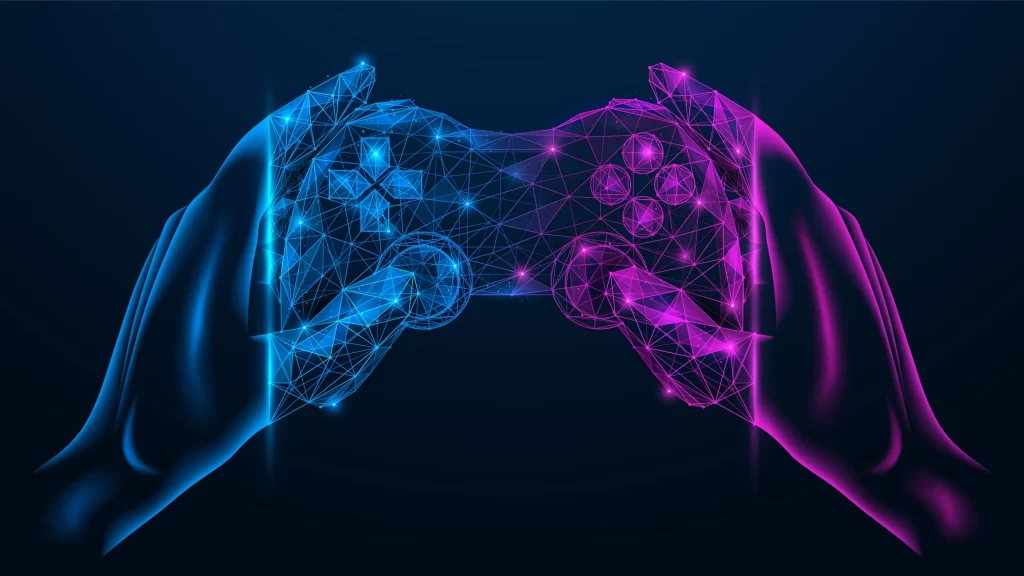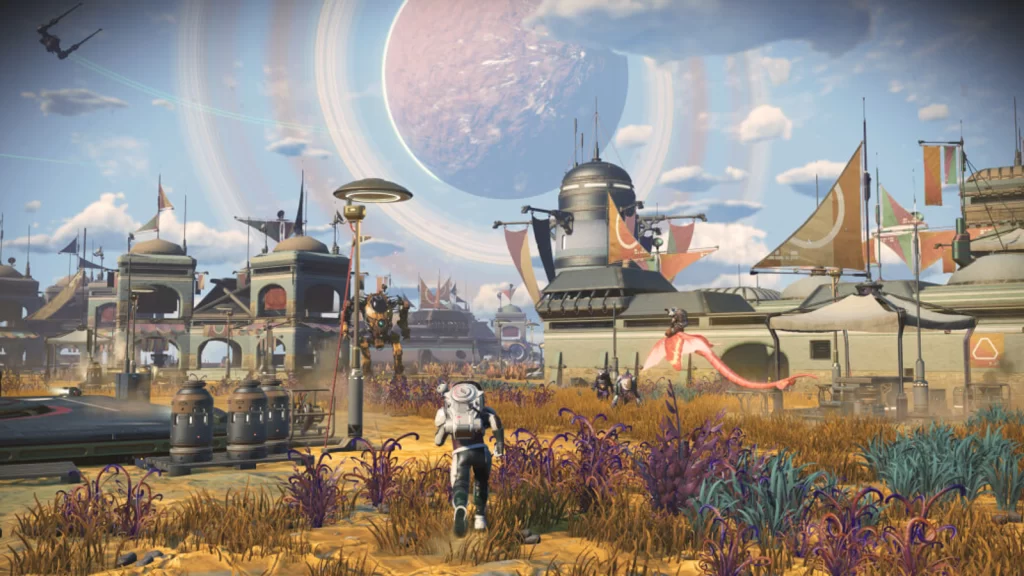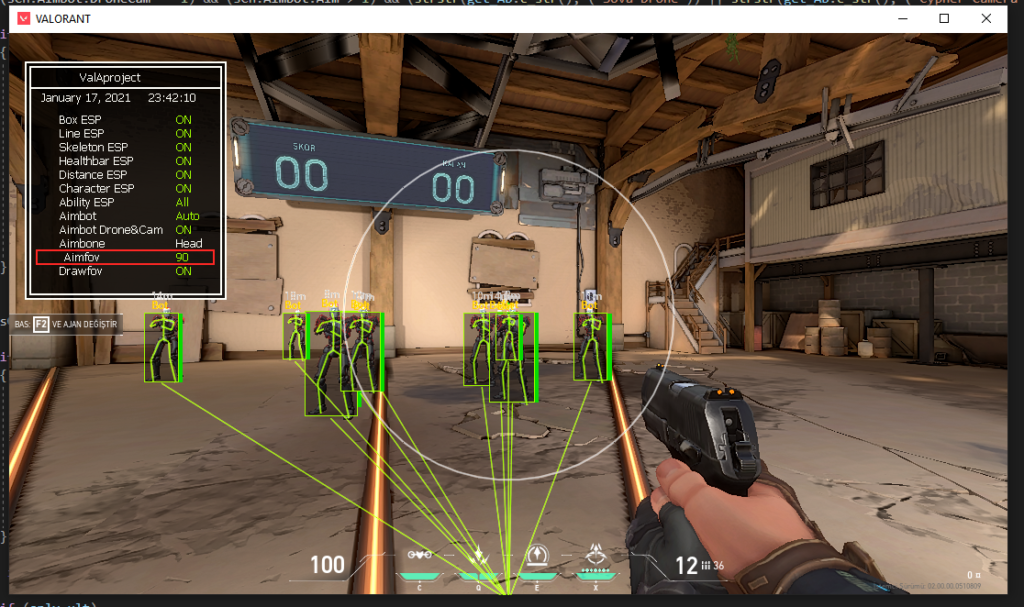Artificial Intelligence (AI) has become an integral part of the gaming industry, transforming the way players interact with virtual worlds. From the early days of simplistic Non-Playable Characters (NPCs) to the sophisticated, dynamic environments of today, AI in video games has played a crucial role in enhancing the gaming experience.
In this article, we want to explore the evolution of AI in video games, highlighting key advancements, its impact on gameplay, and what the future holds for the technology in the gaming industry.
Read as well: What is production design? The art of world-building

AI in video games
Let’s start by discussing how AI in video games has evolved through time.
In the early stages of video game development, AI was mainly used in the creation of behavior patterns in Non-Playable Characters (NPCs). Although this AI was very rudimentary, the NPCs were constrained by pre-programmed scripts, adhering to rigid and repetitive patterns that dictated their behaviors.
These early game characters lacked the sophistication to dynamically respond to player actions, leading to a gaming experience characterized by static and predictable encounters. With the progression of AI capabilities, game developers began to integrate more nuanced and adaptive systems, enabling NPCs to showcase a higher degree of complexity in their interactions with players.
This shift facilitated the creation of virtual worlds that felt more immersive and responsive, breaking away from the limitations of scripted sequences.
One pivotal development was the introduction of machine learning algorithms, allowing NPCs to learn and adapt based on player behavior. Instead of adhering strictly to predefined scripts, these characters started to exhibit a degree of autonomy, adjusting their actions and responses in real time. This not only added unpredictability to gameplay but also heightened the sense of realism as NPCs began to emulate more human-like decision-making processes.
The incorporation of sophisticated pathfinding algorithms enabled NPCs to navigate complex environments with increased intelligence. Rather than following predetermined routes, these characters could now dynamically assess their surroundings, avoiding obstacles and seeking optimal paths.
This contributed to a more natural and organic NPC movement and also enhanced the overall gaming experience by promoting a greater sense of immersion. Nowadays, emotional and social intelligence have become focal points in NPC development. Advanced AI models allowed NPCs to express a broader range of emotions, fostering more meaningful connections between players and virtual characters.
Social interactions within the game world became more dynamic, with NPCs exhibiting realistic responses to player choices, forming alliances, or even evolving rivalries.
Procedural generation: AI beyond the NPC
But NPCs are not the only use of AI in video games. Procedural generation, coupled with AI, has revolutionized the gaming landscape.
One of the quintessential examples of this groundbreaking synergy is exemplified by games like No Man’s Sky, where procedural algorithms seamlessly weave intricate, vast universes, each characterized by its distinct planets, creatures, and ecosystems.
The integration of procedural generation in gaming signifies a departure from the traditional, static-level design. Instead, it introduces an element of unpredictability and uniqueness by relying on algorithms to dynamically create content.
The role of AI in this dynamic landscape is equally paramount. Rather than merely generating static entities, AI introduces an element of life and evolution into the virtual environment. It influences the overall gameplay by dynamically adjusting difficulty levels, adapting enemy behavior based on player actions, and crafting unique narrative arcs tailored to individual player experiences.
This level of adaptability ensures that each playthrough is not only visually distinct but also offers a personalized and challenging journey. The combination of procedural generation and AI doesn’t merely enhance the visual and interactive aspects of gaming; it addresses the challenge of content fatigue at the same time.
Traditionally, game developers faced the daunting task of creating extensive and varied content to keep players engaged. Procedural generation, with the assistance of AI, mitigates this challenge by providing a framework for near-infinite content possibilities, ensuring that players encounter fresh and unpredictable scenarios even after extensive gameplay.
This is the secret behind the rise in popularity of the “roguelike” genre, where levels are randomly generated in each playthrough, always adding a touch of novelty and unpredictability to the game.

Emotional AI and storytelling
In recent years, the integration of AI in video games has expanded into the realm of storytelling.
Beyond traditional scripted narratives, the advent of Emotional AI systems has enabled a dynamic and adaptive approach to storytelling, transforming the gaming experience into a more personalized and emotionally resonant journey.
One of the key aspects of AI-enhanced storytelling is the ability of Emotional AI systems to analyze and interpret player behavior in real time. Through sophisticated algorithms and machine learning, these systems can discern a player’s reactions, choices, and emotional responses during gameplay.
AI-driven storytelling introduces the concept of non-linear narratives with multiple branching paths.
Traditional linear narratives follow a predetermined sequence of events, offering limited variability. In contrast, AI-powered systems can generate a plethora of narrative possibilities based on the player’s choices, creating a truly unique and personalized gaming experience. This branching narrative structure not only enhances replayability but also reflects the diverse and evolving nature of player interactions within the game world.
The future of AI in video games
Rather than adhering to conventional static difficulty levels, the future of AI in video games holds the promise of adaptive systems that possess the capability to dynamically assess and respond to individual players’ skill levels, play styles, and preferences in real time.
Adaptive AI continuously monitors and analyzes a player’s actions, learning from their decisions, successes, and challenges. This real-time data allows the AI to make instant adjustments to the game’s parameters, ensuring that the level of difficulty remains finely tuned to the player’s evolving skill set.
This technology can go beyond mere difficulty adjustments by tailoring various elements of the gaming environment to suit individual preferences. For example, the AI may modify the frequency and type of in-game rewards, customize the narrative trajectory based on the player’s choices, or even adjust the aesthetics to align with personal preferences.
The continuous learning capability of adaptive AI contributes to the longevity of a game’s appeal – as players progress and develop new strategies, the AI adapts accordingly, introducing fresh challenges and preventing the gaming experience from becoming monotonous.
But that’s not all. Another prominent area where AI demonstrates its prowess is in character design. Through advanced algorithms and machine learning techniques, AI can analyze player preferences, popular trends, and historical data to generate novel and appealing character concepts.
This impact extends to the task of level layout. Game developers often grapple with the challenge of crafting engaging and balanced levels, and here, AI algorithms prove invaluable. They can analyze gameplay data, player behavior, and pacing requirements to suggest optimal spatial arrangements, placement of obstacles, and distribution of resources. This not only accelerates the level design process but also enhances the overall gaming experience by delivering well-crafted and dynamic environments.

AI in video games: it has just begun
The future is promising for AI in video games. From static environments end NPCs to dynamic, responsive ecosystems., as technology continues to advance, we can expect even more sophisticated AI implementations, pushing the boundaries of what is possible in gaming.
The integration of machine learning, procedural generation, and emotional AI is poised to redefine the gaming experience, providing players with increasingly immersive and personalized adventures in the digital realm.
And we here at Main Leaf are ready for this future. We have seen many things change during our 11 years of experience in the game development industry. We know that even with all these changes, things are not even close to finishing. Gaming technology still has a lot more room to grow, and that’s what makes us passionate about what we do.
If you like this article, check out our blog for more articles about many subjects relating to the game development industry. And, if you need any help developing your game, contact us for a quote.

